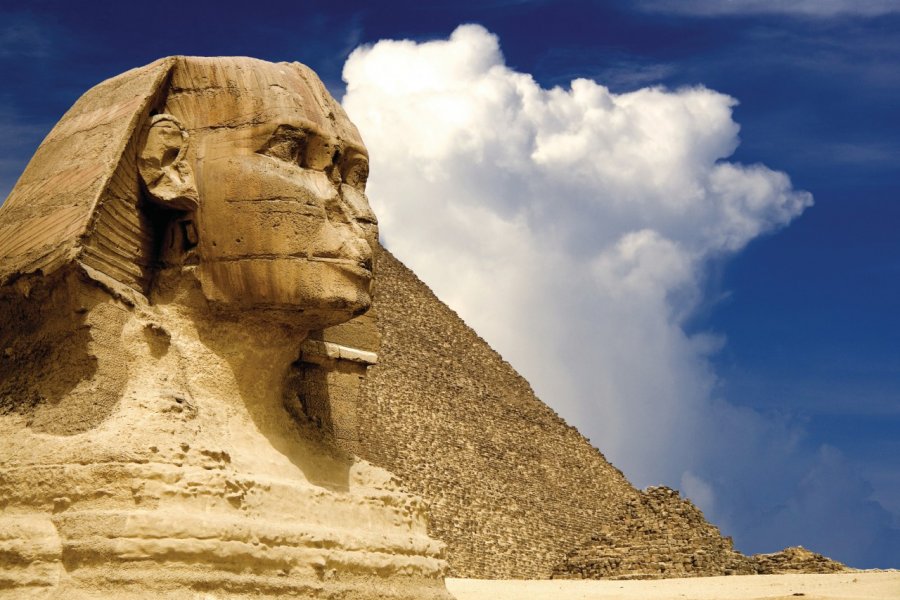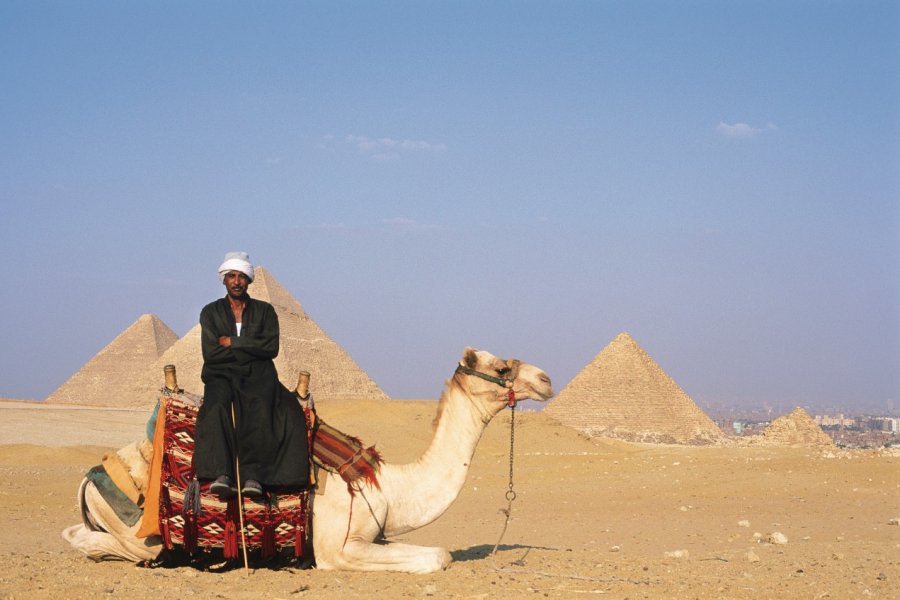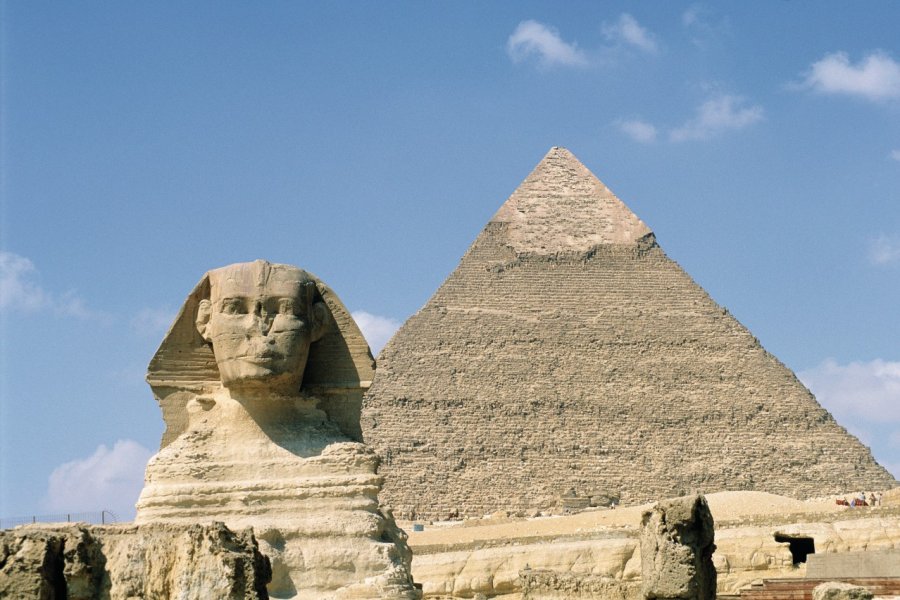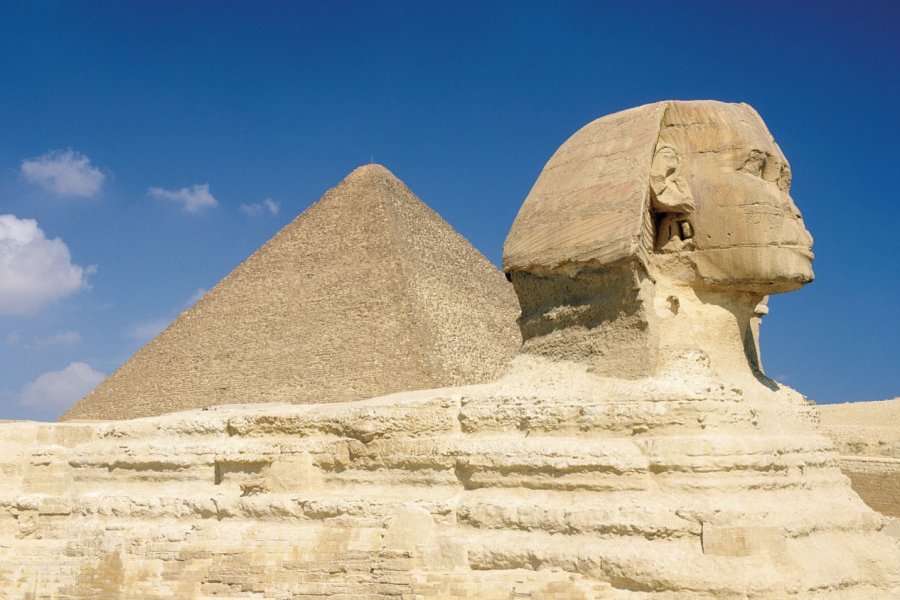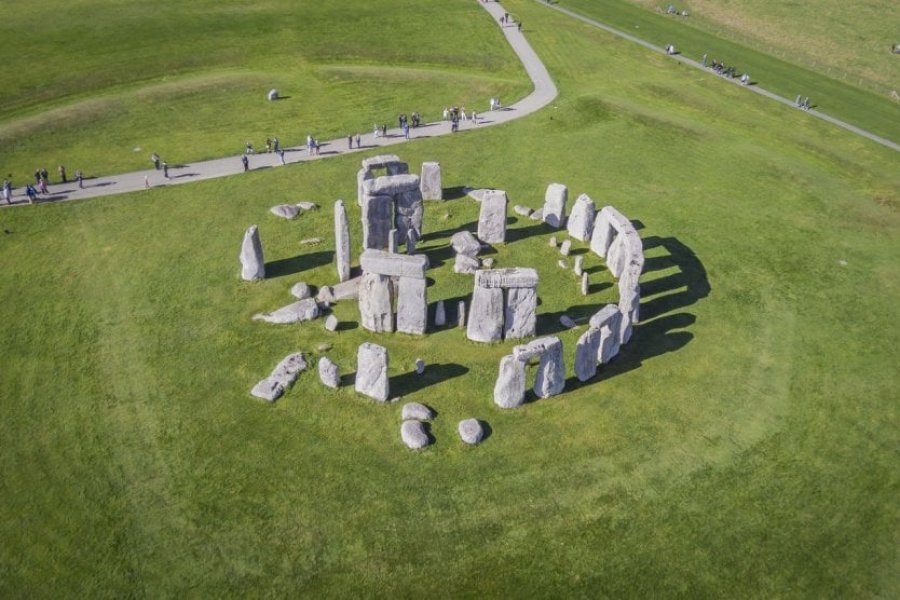Travel Guide Guiza Plateau
Find an accommodation
Advertising
The pyramids... They alone are the motivation for a trip to Egypt, and it's easy to see why: listed as a World Heritage Site, they are the only one of the Seven Wonders of the World still standing. The pyramids and necropolis of Giza are a major step towards understanding Pharaonic culture. Those wishing to discover this culture chronologically will prefer to visit Saqqarah and then Dachour, to understand the evolution of funeral rites and the construction of the pyramids themselves.While the pyramids themselves are not in danger, the site itself is. The pyramids lack space, calm and silence. The living are all too present on this barren plateau that the ancients reserved for the dead. Near them, we'd like to forget the present, and still believe in the mystery and enigma they have always been for the human spirit. The development of the site is highly questionable. To the east, nothing has been done to give the Sphinx a more dignified counterpart than the stores that taunt it, 200 m away. To the north, the main access for buses and cars is still a shambles. In the middle of the Giza plateau, an unsightly parking lot forces visitors to cut short their journey back through the centuries by passing through the coaches between the pyramids of Cheops and Chephren. It is no longer even possible to stray westwards from the site, to try and find a "virgin" viewpoint of the pyramids in the desert: 3 km away, the blocks of flats of the new 6-Octobre housing estate break the charm. In a few years' time, it is feared that the Giza plateau will be no more than a park in the middle of Cairo's western suburbs. Don't miss the pyramids of Giza during your trip: a challenge to human genius, the magnificence of Pharaoh's kingship, a commemoration of the genesis of the world, a symbol of the perpetuity of the divine solar race, the pyramids are naturally imposing. As was generally the case with the colossal funerary enterprises of the Old Kingdom, the pyramids were built in several stages. The initial project was often deemed too modest by the king, who demanded that it be modified, sometimes multiplying the previously planned volume by eight. Before the pyramids could be built, the terrace on which they were to stand - a natural promontory some 40 m above the valley - had to be levelled. It is estimated that it took around ten years to prepare the ground. To appreciate the scale of the undertaking and the enormous resources involved, it's worth remembering that each pyramid has two funerary temples, one close to the building itself, the other lower down in the valley. Only the lower temple of Chephren, long considered to be the Sphinx temple (the real temple, in ruins, is next door), has been rebuilt.Entrance fee: 240 LE for the site, including a visit to the Sphynx and the exteriors of all the pyramids (you have to pay extra to get inside some of them).
Suggested addresses Guiza Plateau
Weather at the moment
Advertising
Organize your trip with our partners Guiza Plateau
Transportation
Book your plane tickets
Car Rental
Boat rental
Accommodation & stays
Find a hotel
Holiday rental
Find your campsite
Tailor-made trip
Immersion travel
Services / On site
Activities & visits
Find a doctor







